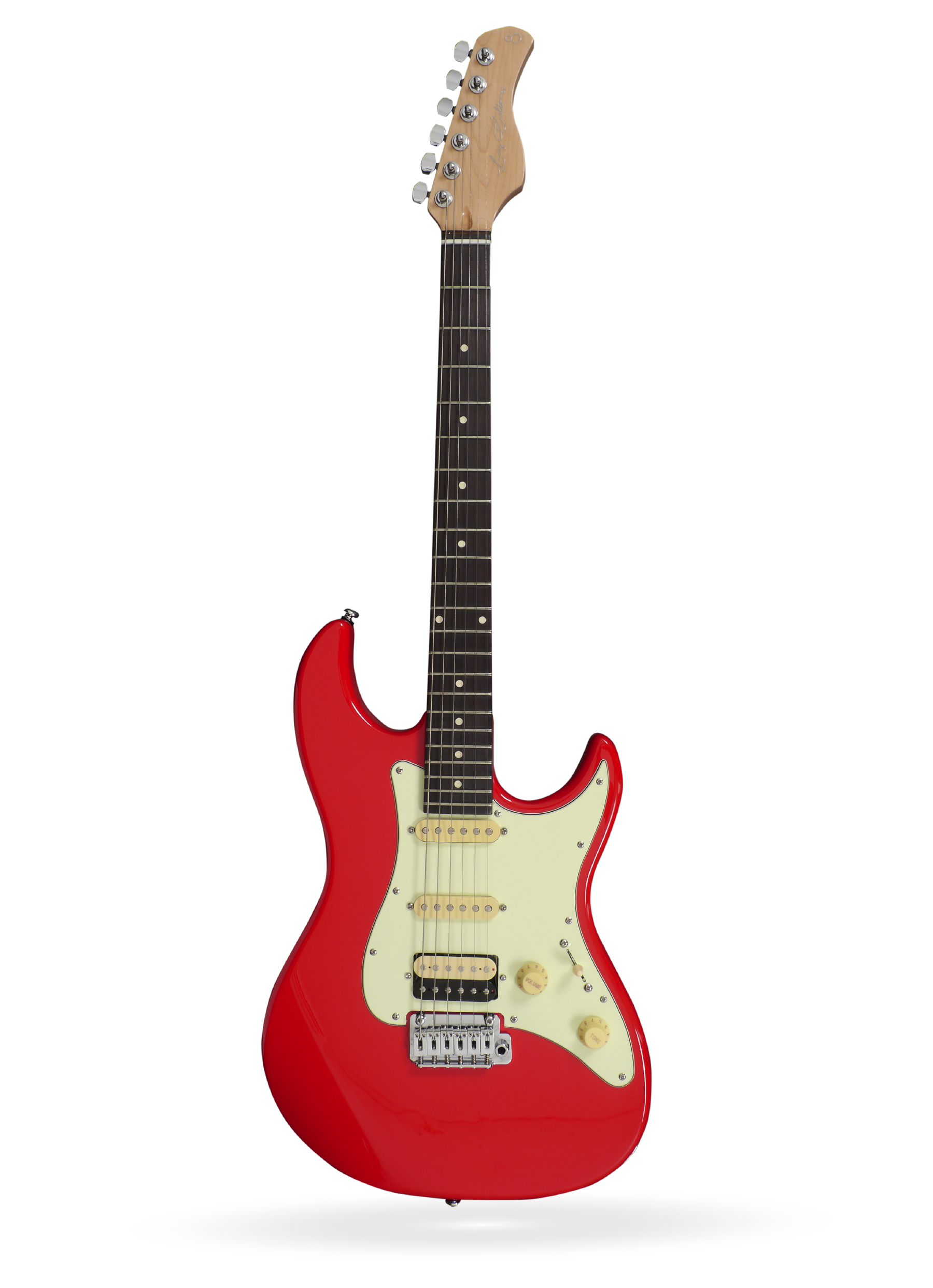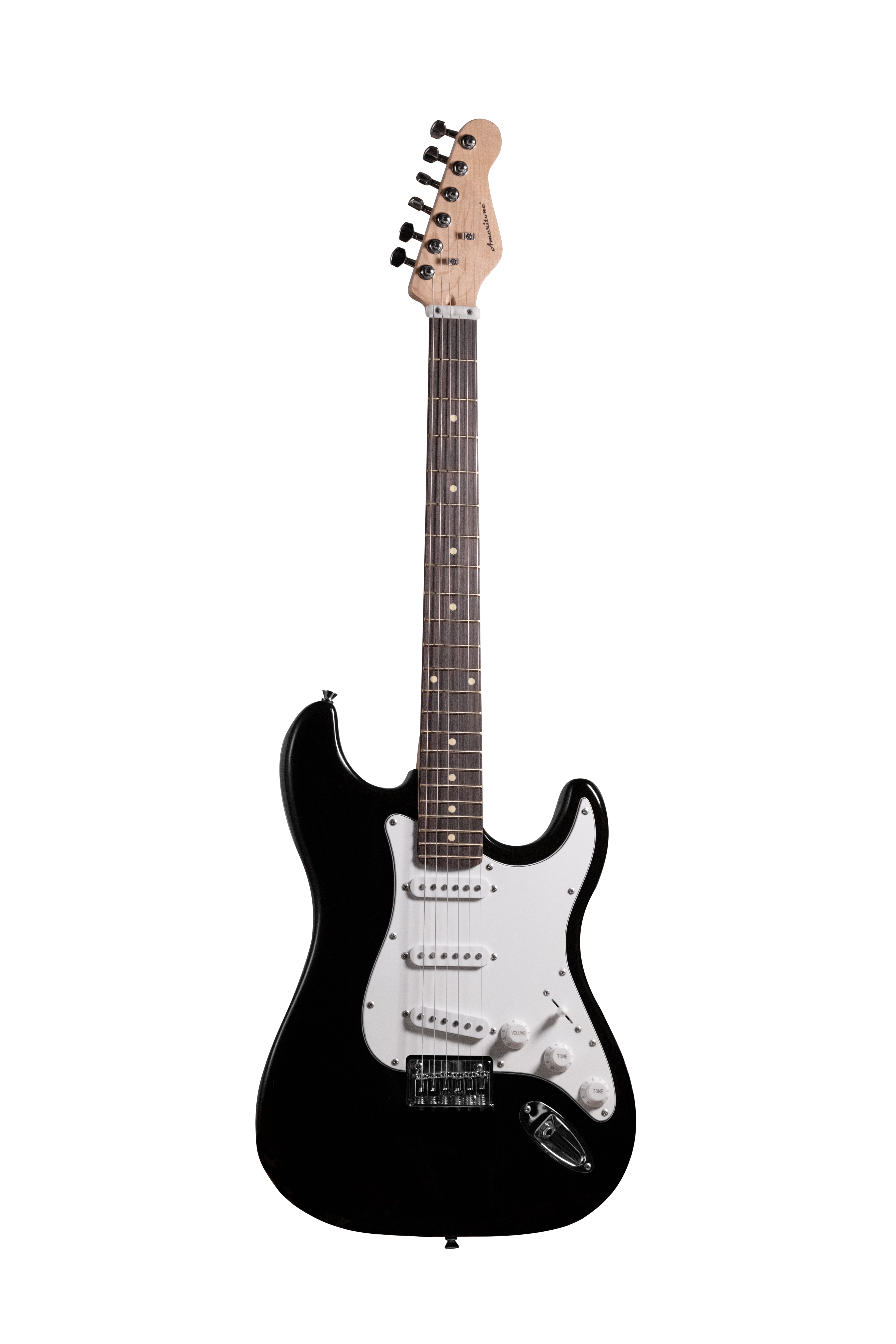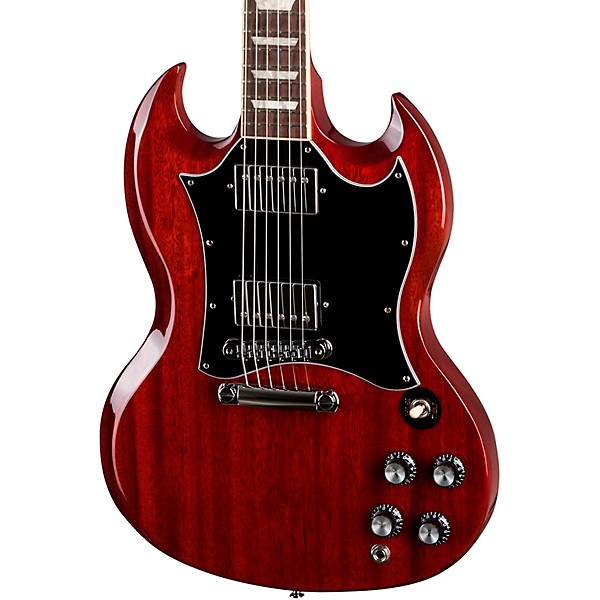Electric guitars convert string vibrations into electrical signals. These signals shape rock, blues, and countless other music genres.
The electric guitar has revolutionized music since its inception, offering musicians a vast array of sounds. Its versatility comes from electromagnetic pickups that capture string vibrations and controls that adjust volume and tone. Players amplify these signals through speakers, achieving different effects with pedals and amplifiers.
This instrument’s design, with a solid or semi-hollow body, allows for sustained notes and a distinctive presence on stage; a trait cherished by performers worldwide. Whether you’re a budding guitarist or an avid listener, the electric guitar’s impact on modern music culture is undeniable, making it an iconic symbol of musical expression.
The Evolution Of The Electric Guitar
From humble beginnings to modern melodies, the electric guitar has become synonymous with musical innovation and cultural influence. This iconic instrument’s journey is one of technical pioneering and creative brilliance. As we delve into the rich history of the electric guitar, we’ll discover the milestones that shaped its sound and revolutionized the music industry. Let’s explore the transformative stages that highlight the evolution of the electric guitar.
The Birth Of The Electric Guitar: Early Innovations
The inception of the electric guitar lies in the pursuit to amplify the sound of traditional acoustic guitars. In the 1920s and 1930s, inventors like George Beauchamp and Adolph Rickenbacker were at the forefront, developing the first electrically amplified guitars. The Rickenbacker “Frying Pan,” was pivotal, featuring a magnetic pickup that converted string vibrations into electric signals for amplification—the cornerstone of future electric guitars.
Musicians soon embraced the amplified guitar for its ability to cut through the mix of ensembles and big bands. This period saw an innovation surge, including the development of different pickup designs, on-board electronics, and feedback management techniques. Guitarists were now armed with an instrument capable of new sounds and volumes, catering to the evolving demands of diverse musical genres.
Golden Age Of Electric Guitars: The 1950s And 1960s
This era marked a renaissance for the electric guitar, forever changing the landscape of popular music. Renowned brands like Fender and Gibson introduced iconic models—the Stratocaster, Telecaster, and Les Paul. These guitars featured solid bodies that resisted feedback and nuanced electronics that offered a spectrum of tones. The 1950s and 1960s birthed rock ‘n’ roll, blues, and surf music, with the electric guitar at its heart.
Cultural icons wielded these instruments, cementing their legendary status. Jimi Hendrix, Eric Clapton, and Jimmy Page, among others, showcased the expressiveness of the electric guitar, inspiring generations of players. During this golden age, the electric guitar evolved from a rhythm accompaniment to a lead instrument capable of incredible sonic power and diversity.
Modern Developments And Technological Advances
Today’s electric guitars are marvels of technology and customization. Advancements in materials, construction techniques, and electronics have enabled an unprecedented level of precision and versatility. Innovations like multi-scale frets, modeling amplifiers, and digital effects processors empower musicians to shape their unique soundscapes.
- Digital integration allows for the direct recording and manipulation of guitar sounds in production software.
- The rise of custom and boutique guitar makers has introduced a new era of handcrafted precision and unique designs.
- Developments in pickup technology have refined the quality of tone, from crystal-clear cleans to ferocious distortion levels.
The evolution of the electric guitar reflects the dynamic nature of music itself—constantly adapting, innovating, and responding to the demands of artists and audiences alike. From the jazz clubs of the 1930s to the biggest stages of the 21st century, the electric guitar has not only endured but thrived, etching its place in the history of human creativity.

Credit: sire-usa.com
Understanding Electric Guitar Technology
The electric guitar, a staple in various music genres—from rock to jazz, has captivated audiences with its electrifying sounds for decades. Essential to its allure is the sophisticated technology behind it. Let’s delve into the inner workings of the electric guitar, exploring the components that capture, transform, and enhance its iconic sound.
Pickups And Electronics: How Sound Is Transformed
Electric guitars turn string vibrations into electrical signals using pickups. These are essentially magnetic coils that, when disturbed by the metallic strings, induce an electrical current. This current is then routed through the guitar’s electronics.
- Single-coil pickups produce a bright, crisp sound but can introduce a ‘hum’ due to electromagnetic interference.
- Humbucker pickups, with two coils, cancel out this noise, resulting in a richer, warmer tone.
- Active pickups use an internal preamp to boost the signal, offering higher output and less noise.
After the pickups do their work, volume and tone controls allow for further tailoring of the sound before it exits through the output jack.
The Role Of Amplifiers In Shaping Tone
An electric guitar’s signal is weak and requires amplification to produce a sound audible enough for performances and recording. Guitar amplifiers not only amplify the signal but also play a crucial role in shaping the guitar’s tone.
- Preamp stage: Boosts the initial signal and shapes the tone’s color and quality.
- Power amp stage: Increases the signal’s strength to drive the speakers.
- Speaker cabinet: Contributes to the final sound based on size, material, and design.
Beyond volume, amps offer a variety of controls to modify the EQ settings (bass, mid, and treble), and by doing so, enable musicians to find their unique sound.
Guitar Effects: From Distortion To Delay
The realm of electric guitar sounds extends far beyond the natural sound of the strings. Guitar effects pedals play an instrumental role in morphing and enhancing the electric guitar’s voice.
| Effect Type | Characteristic |
|---|---|
| Distortion | Adds crunch and sustain for a heavier sound. |
| Overdrive | Simulates the warm tone of a tube amp pushed beyond its limits. |
| Delay | Repeats the played note for an echo effect. |
| Reverb | Creates the ambiance of playing in a larger space. |
| Chorus | Doubles the sound and slightly shifts the pitch for a fuller tone. |
With a myriad of available effects, guitarists can layer sounds and create textures unattainable with the raw instrument alone, crafting sonic landscapes that inspire and energize listeners.
The Impact Of Electric Guitars On Music And Culture
The Impact of Electric Guitars on Music and Culture has been nothing short of revolutionary. The introduction of the electric guitar brought with it a new era of sound innovation, influencing genres from blues to rock, shaping cultural movements, and becoming a pivotal instrument in the music industry. Its strings have resonated through decades, leaving an indelible mark on both the sonic landscape and the cultural identity of generations.
Electric Guitars And The Rise Of Rock And Roll
The electric guitar’s introduction dovetailed perfectly with the emergence of rock and roll. Its electrifying sound provided the backbone for a genre that would become the anthem of a new era. As rock and roll bands like Elvis Presley’s ensemble and The Beatles climbed the charts, the electric guitar was there, fueling the beats and cries of a cultural revolution. It enabled artists to produce louder, more distorted, and unique sounds which became synonymous with the energy and spirit of rock music.
Iconic Electric Guitar Players And Their Influence
- Jim Hendrix: Transformed the use of the electric guitar with his innovative techniques.
- Eric Clapton: Known for his blues-inspired playing, influencing countless musicians.
- Jimmy Page: His work with Led Zeppelin established the foundation of hard rock.
These guitarists, among others, pushed the boundaries of what the instrument could do, inspiring legions of fans and future guitarists to pick up the instrument and start their own musical journeys. Their impact on music reverberates to this day, with their riffs and solos studied and admired by both enthusiasts and professionals alike.
The Electric Guitar As A Symbol Of Youth Rebellion And Identity
The electric guitar quickly became more than an instrument; it was a symbol. It stood for rebellion, freedom, and self-expression. Teenagers across the world saw the electric guitar as a way to break free from the conservative norms of earlier generations. Rock icons wielding their axes became avatars for youthful defiance, their images and sounds emblazoned in the collective memory of the culture. Strumming the electric guitar gave voice to new identities and social movements, echoing through the halls of time as a battle cry for progress and change.

Credit: www.walmart.com

Credit: www.guitarcenter.com
Are Electric Guitars from La Considered High Quality?
When exploring the world of electric guitars, the “la electric guitars review” consistently highlights their superior craftsmanship and tonal quality. Musicians appreciate the attention to detail and playability, making them a favored choice among both beginners and professionals. These instruments are truly a blend of art and functionality.
Frequently Asked Questions On How Are Electric Guitar
How Are Electric Guitars Played?
Electric guitars are played by strumming or plucking the strings while pressing down on the fretboard. Players use amps and effects for different sounds.
Are Electric Guitars Any Good?
Electric guitars offer versatility and a wide range of sounds suitable for many music genres. They are popular for their playability and the ability to amplify and modify their output.
How Electric Guitar Works?
An electric guitar uses magnetic pickups to convert string vibrations into electrical signals, which an amplifier then boosts for audible sound.
Is Electric Guitar Ok For Beginners?
Yes, electric guitars are suitable for beginners due to their easier playability and diverse sound options, which can motivate practice and learning.
Conclusion
Embracing the electric guitar revolution promises an electrifying journey through sound and innovation. It’s not just about strings and pickups anymore; it’s an ever-evolving art form. Whether you’re a seasoned shredder or a curious newcomer, the exploration of electric guitars opens up a universe of musical possibility.
Dive into this world, and let your creativity soar to new heights with every strum.
